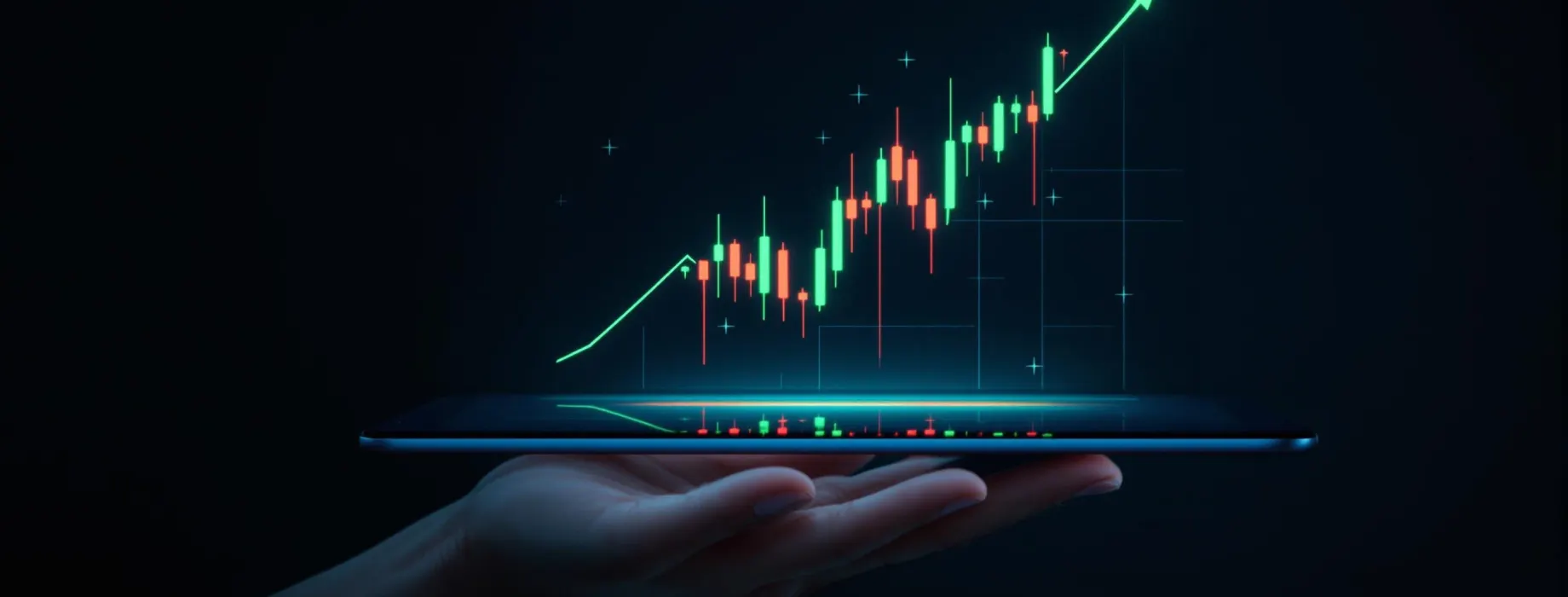- How to read an options chain and what each metric means
- The real role of open interest and why it’s not just “volume”
- How to use the put-call ratio as a real-time sentiment gauge
- Ways to detect institutional flow and track crowd behavior
- How to avoid common mistakes when interpreting options data
Options Chain Analysis: Understanding Put-Call Ratio and Open Interest

When price alone doesn't tell the full story, options chain analysis fills in the gaps. It’s where raw sentiment, institutional positioning, and market expectations collide — in real time.Unlike basic technical indicators, options data offers a behind-the-scenes look at trader behavior. It shows where big money is placing bets, how much risk they’re willing to take, and at what levels they expect action.
Article navigation
- 📋 What Is an Options Chain?
- 📊 Why Options Chains Matter
- ⚖️ Put/Call Ratio: Sentiment in Numbers
- 📈 Reading Institutional Flow from Options Data
- 🧪 Real-World Use Case: Spotting a Sentiment Shift Before It Hits the Chart
- 🧨 Common Misconceptions About Options Chain Analysis
- 🧾 Conclusion: See the Market Before It Moves
- 📚 Sources
For retail traders — especially those using binary or short-term derivatives — learning to interpret the options chain is like gaining access to the market’s nervous system. It’s not just about calls and puts — it’s about what those positions imply.
In this guide, you’ll learn:
This isn’t theoretical. It’s real data, real decisions, real edge — if you know how to read it.
📋 What Is an Options Chain?
An options chain is a structured list of available call and put contracts for a specific asset — arranged by strike price and expiration date. But beyond its spreadsheet-like appearance lies a dynamic map of market sentiment and positioning.
Every row in the chain reflects what traders think will happen next — and where they’re placing capital to profit from those beliefs.
🧩 Key Components of an Options Chain:
- Strike Price — The price at which the option can be exercised.
- Expiration Date — The day the option becomes void.
- Call Options — Bet that price will go above the strike before expiry.
- Put Options — Bet that price will fall below the strike.
- Bid/Ask — Market prices to buy or sell each contract.
- Volume — Number of contracts traded today.
- Open Interest (OI) — Total number of contracts still active.
These values aren’t static. They move constantly — reflecting changes in demand, sentiment, and positioning.
📊 Why Options Chains Matter
Think of the options chain as order flow for the future. While a chart shows what happened, the chain shows what traders expect to happen — and how confident they are.
By monitoring shifts in open interest, volume spikes at key strikes, and imbalances between puts and calls, traders gain early insight into potential breakouts, support zones, or exhaustion points.
⚖️ Put/Call Ratio: Sentiment in Numbers
The put/call ratio (PCR) is one of the simplest — yet most misunderstood — sentiment indicators in options analysis. At its core, it measures how many puts are being traded relative to calls. But interpreting it blindly leads to bad trades.
Let’s break it down properly.
🧮 How Put/Call Ratio Is Calculated:
PCR = Put Volume / Call Volume
- If PCR > 1 → More puts than calls = bearish skew
- If PCR < 1 → More calls than puts = bullish skew
- If PCR ≈ 1 → Balanced sentiment or indecision
But context matters. A rising PCR in a strong uptrend may signal hedging, not bearish conviction.
🔎 Interpreting PCR Like a Pro
- Extremely High PCR (e.g., > 1.5): Panic? Maybe. Or maybe institutions are hedging long portfolios.
- Extremely Low PCR (e.g., < 0.5): Could mean euphoric buying — but also excessive optimism, a reversal risk.
- PCR Spikes on Low Price Movement: Watch out — could signal big positioning beneath the surface.
Always pair PCR with price structure — don’t rely on it in isolation.
🧠 Application Tip:
Use PCR as a contrarian filter:
- When everyone is loading puts, but price holds — bullish reversal may come.
- When calls are stacked, but price can’t break up — potential exhaustion.
In binary options, sharp PCR shifts near key expiries often hint at last-minute sentiment turns.
📈 Reading Institutional Flow from Options Data
Institutions don’t trade options like retail. They don’t chase. They build positions quietly, often using combinations of strikes, expiries, and even opposing trades to mask intent. But with the right lens, their moves leave footprints.
Options chain analysis — especially when paired with open interest and unusual activity — helps you see through the noise.
🧠 Key Signs of Institutional Activity:
- Unusual Volume vs Open Interest
If volume at a specific strike suddenly dwarfs existing OI, and it’s not near expiry — someone’s entering aggressively.- Example: OI = 3,000, but today’s volume = 20,000 → someone’s planting a flag.
- Deep Out-of-the-Money (OTM) Builds
Institutions often use cheap OTM puts/calls as tail-risk hedges or speculative plays with asymmetric payout. When large OI stacks at far strikes, it’s not random. - Multi-leg Combinations
Spotted unusual volume on both calls and puts at multiple strikes? Could be a straddle, strangle, or vertical spread — classic institutional strategies.
🔍 Tools to Help Identify Flow:
- Time & Sales: Look for big blocks hitting at ask or bid.
- Sweep Orders: Orders that break across multiple exchanges at once = urgency.
- Unusual Options Activity Trackers: Not always precise, but helpful for context.
🧩 What This Tells You
Institutional flow gives early signals of:
- Big directional bets
- Risk hedging
- Upcoming volatility spikes
- Reversal zones (where liquidity is needed)
In short: if you can see where the big players are concentrating exposure, you can anticipate market shifts before they hit the chart.
🧪 Real-World Use Case: Spotting a Sentiment Shift Before It Hits the Chart
Let’s walk through a real-style case that shows how options chain analysis revealed a shift in market sentiment — before the candles confirmed it.
📍 The Setup
- Asset: Large-cap tech stock (let’s call it TECHX)
- Date: 5 trading days before earnings
- Price: $132
- Trend: Sideways after a multi-week decline
🔍 Options Chain Observations
- At the $130 strike, call open interest jumped from 5K to 28K within two sessions.
- Put open interest remained flat at the same level.
- Unusual call volume at $135 and $140, both with near-zero OI before.
- Volume occurred during the last 90 minutes of trading, with sweep orders at ask.
🧠 Interpretation
- Smart money likely building long exposure, expecting upside move before or after earnings
- Flat put OI → lack of bearish sentiment
- Increased OI across out-of-the-money calls → traders pricing in momentum
At this point, price had not yet moved. The chart showed no breakout. But the options chain was screaming “accumulation”.
🎯 What Happened Next
Two days later, TECHX spiked 4% on no news — then rallied 7% into earnings. Those $130 calls went deep ITM. The $135 calls printed 2.5x returns.
Retail traders saw a “surprise rally”. Options chain watchers? They saw it coming.
Moral: Price is the result. Flow is the signal.
🧨 Common Misconceptions About Options Chain Analysis
Even experienced traders misread options data. Here’s what to stop assuming if you want to use the chain properly.
❌ 1. “High Open Interest = Price Will Move There”
Wrong. High OI shows interest — not direction.
Just because there are 80K calls at 150 doesn’t mean price is going there. It might just be hedging or premium selling.
❌ 2. “Put/Call Ratio Always Means Reversal”
A high PCR doesn’t automatically mean bullish.
Context is key. In bear markets, high PCR can reflect real fear, not opportunity. In bullish runs, low PCR might mean too much greed.
❌ 3. “Volume Means Smart Money”
Big volume ≠ smart flow. It could be noise, rotation, or even retail positioning.
Unless paired with OI changes and trade structure, don’t overinterpret spikes.
❌ 4. “One Day’s Flow Is Enough”
Institutional positioning builds over days or weeks.
One flashy day of call buying doesn’t mean the market is flipping.
Look for sustained patterns, not isolated prints.
Bottom line: The options chain is a tool — not a crystal ball. Used correctly, it filters noise and reveals where conviction sits. Used lazily, it just creates confusion.
🧾 Conclusion: See the Market Before It Moves
Options chain analysis isn’t about predicting the future — it’s about reading the present with clarity.
By tracking:
- Where open interest builds
- How the put/call ratio shifts
- And when unusual activity strikes key levels
…you gain an edge that most traders overlook.
This data shows what traders believe, what institutions hedge against, and where market tension is building — before it explodes into price action.
If you’re trading short-term instruments like binary options, being early isn’t luck — it’s preparation. Let the options chain guide you.
📚 Sources
- CBOE Options Institute — Understanding Open Interest and PCR
- Investopedia — Options Chain Explained
- OCC (Options Clearing Corporation) — Institutional Options Flow Reports
- TradingView — Options Flow Analytics
FAQ
Is open interest more important than volume?
Yes — OI shows position buildup, while volume only reflects today’s activity. High OI at key levels suggests real commitment, not just noise.
Can the put/call ratio predict market direction?
Not directly. It’s a sentiment indicator, not a directional signal. Use it to spot extremes, then confirm with price structure or flow data.
What does it mean when OI is high but price doesn’t move?
It often means premium selling or hedging. Not all positioning is directional — sometimes, the market is betting on nothing happening.
How do I know if an options trade is from an institution?
Look for:Large block sizesSweep ordersConsistent patterns across strikes or expiriesInstitutions often build positions quietly and systematically, not with one big splash.
